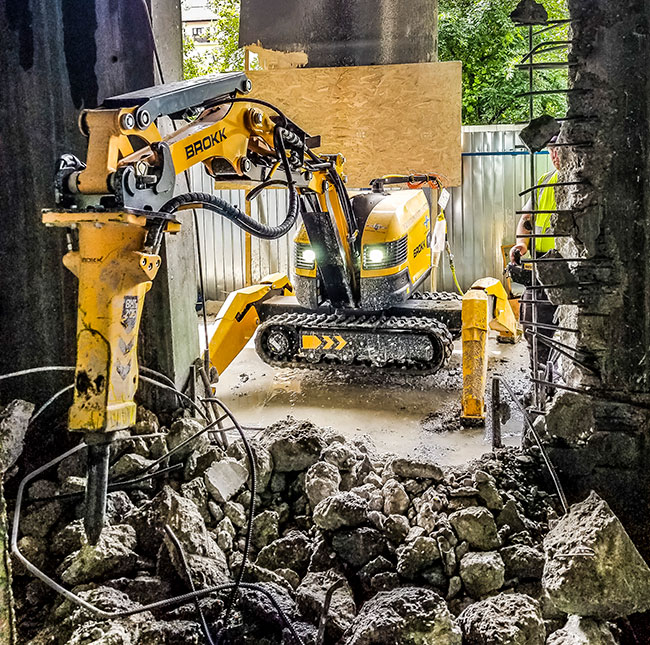
The best bit
By Jeff Keeling
Features Tech tips canada concrete demolition rentalThe right bit maximizes demolition efficiency.
 The moil point offers good control, allowing operators to demolish around rebar with precision and efficiency for applications such as walls, footings, floors or machine bases.
The moil point offers good control, allowing operators to demolish around rebar with precision and efficiency for applications such as walls, footings, floors or machine bases. When it comes to minimizing effort and maximizing efficiency in concrete demolition applications, selecting the right tool for the job at hand is key. Operators working with a remote-controlled demolition machine are already ahead of the competition in terms of safety and productivity.
These innovative machines offer industry-leading power-to-weight ratios with the versatility and efficiency to master a wide range of applications. But making sure a demolition robot is equipped with the right tool for the application can take operations to the next level. The wrong tool selection, on the other hand, can slow down productivity or leave behind unsatisfactory results. Here are some helpful tips for selecting the right tool to maximize breaking potential in a number of applications.
The moil point tool is the most common bit found on jobsites. The pencil-tip design focuses the entire force of the hammer and carrier in a 1/4-inch point, which limits vibrations, making it perfect for indoor applications and other situations where vibrations are unacceptable.
Good precision and control make it ideal for breaking hard concrete reinforced with rebar in applications such as walls, footings, floors, foundations or machine bases. However, it doesn’t provide the level of precision necessary for fine detail work.
The cone-shaped head can also get stuck. This is the result of the material failing to expand fast enough, which traps dust close to the tool and lodges it in place. Avoid this by paying special attention to the running time of the hammer. Don’t run for more than 20 seconds in the same spot without noticeable results.
The moil point has several variations that offer further efficiency in certain situations. A pyramidal moil point, also known as a “nail head,” provides minor torsion and a wedge effect in four directions, making it a better dividing tool, especially in larger diameters. The shape variation also keeps the nail head from getting stuck as much.
A lack of knowledge often leaves operators relying on the cone-shaped moil rather than a tool more appropriate for the job. Carefully consider all aspects of the job before automatically selecting this common tool.
A chisel tool provides strong torsion and good penetration, resulting in the best splitting action. It’s ideal for trimming applications, including floors, walls and foundations, as well as demolishing reinforced columns, supports and blocks. Select a chisel for cleaning up between rebar on the edge of a slab to ensure an ideal bonding surface for pouring concrete.
The chisel also offers the best precision for fine detail work, allowing operators to remove a little concrete at a time, such as shaving down high points or blowouts from slurry walls.
The blunt tool’s flat face delivers a wider area of impact when breaking slab concrete, making it ideal for floors, steel beams encased in concrete, recycling and certain roadwork applications. What it lacks in precision, it makes up for in destructive power. Distributing energy across the entire face covers a significantly larger surface area than pointed tools and greatly increases overall efficiency.
This tool produces heavy vibrations, which limits its use in applications like indoor and top-down demolition and some road and bridge repair. However, the vibrations also make removing concrete from around steel beams easier since it encourages the concrete to “walk away” from the steel.
For maximum destructive power, the slab buster, or “elephant foot,” is the perfect tool for the job. The tool is shaped like a bell and distributes energy over a surface area three times its size, doubling production of both slab and on-grade demolition. However, vibrations and very little precision can limit applications.
When it comes to selecting the right tool for maximum efficiency, a little forethought can go a long way. Using the right bit speeds up production, allowing crews to move on to the next job that much sooner. A toolbox full of bits isn’t always necessary, but for operations looking to maximize their capabilities, having options on hand increases versatility and efficiency.
by Jeff Keeling, North American sales and marketing manager for Brokk.
Print this page